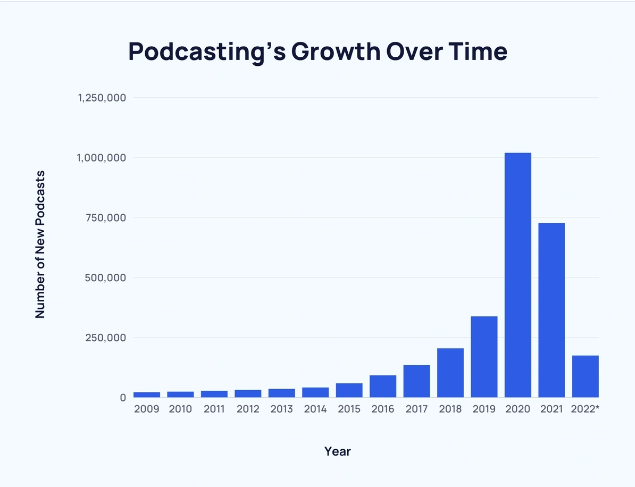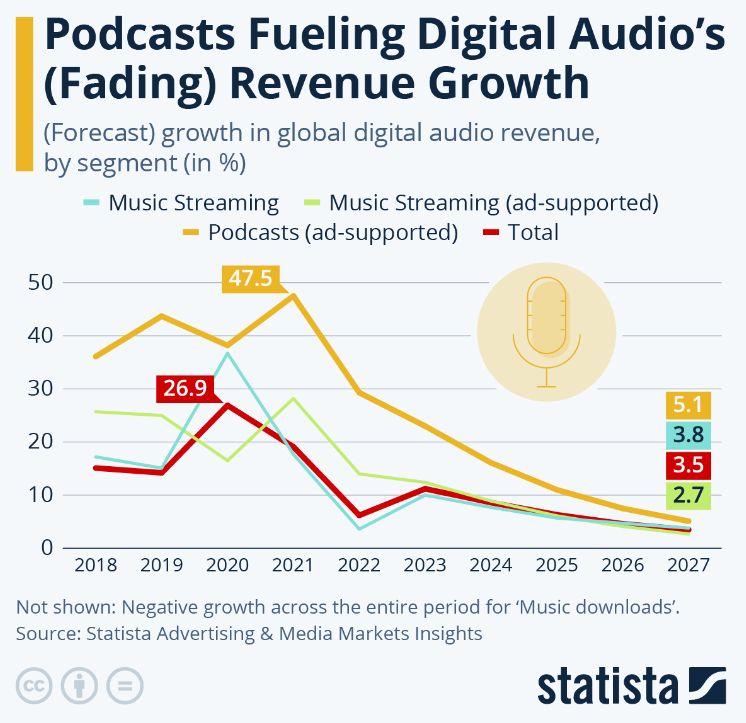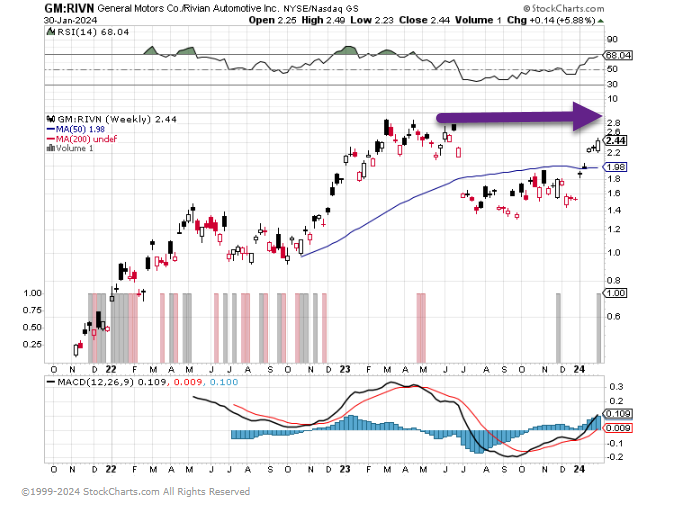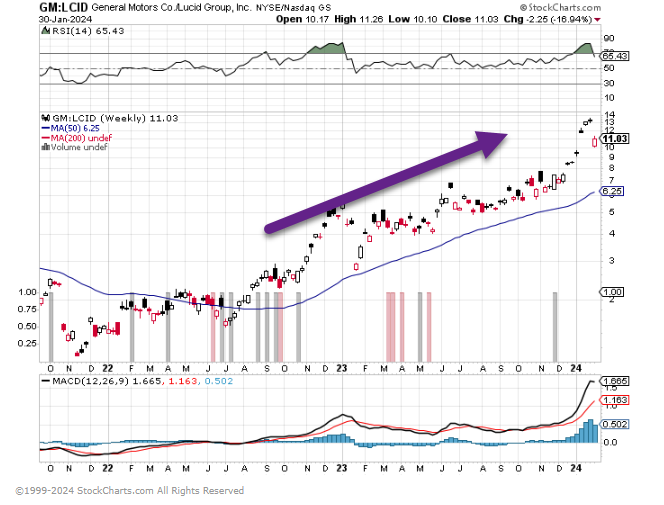1. Tech Trade Most Crowded Since 2020
From Dave Lutz at Jones Trading According to the survey, tech allocation is at its highest since August 2020 and fund managers believe that “long Magnificent 7” – a notional basket of the seven biggest U.S. companies by market value that includes AAPL and MSFT – is the most crowded trade right now.

2. 25 Most Shorted Stocks in S&P
Nasdaq Dorsey Wright https://www.nasdaq.com/solutions/nasdaq-dorsey-wright

3. Blackrock Bitcoin ETF +14% in 5 Days

4. High Quality Fixed Income When the Fed is Easing
Guggenheim Blog

5. Bonds History of Strong Returns
Blackrock Blog Carolyn Barnette

https://www.blackrock.com/us/financial-professionals/insights/capital-markets-predictions-for-2024
6. Japan’s Nikkei 34-Year Highs

7. No Bottom in Sight for Chinese Housing Market
Business Insider Phil Rosen No bottom in sight-As things stand, China’s housing downturn that began in mid-2021 still has no end in sight, according to Goldman Sachs.
Housing starts and new home sales in the country have dropped 64% and 52%, respectively, since peaking at the end of 2020, and analysts expect the country’s inventory glut to keep both variables depressed for several years.
For context, US real house prices peaked in early 2006 and bottomed in 2012. Then, US homeowner vacancy rates peaked in 2008 and did not fall back to their long-term average until a decade later.
Beijing did take action on high home prices in 2016 by tightening mortgage requirements and imposing other restrictions, which were effective in the short term. The pandemic, however, reversed those efforts. Price growth accelerated, and trouble emerged for key developers like Country Garden and Evergrande.
Goldman’s derived measure of China’s real house prices has only dropped by half as much as the US saw during its six-year collapse, as the chart shows below.

Goldman’s gauge for China home prices has declined half as much as the US saw in 2006-2012. Goldman Sachs
“[O]verly loose mortgage lending standards and too much mortgage debt, which were at the center of the US subprime crisis, do not apply in China,” Goldman analysts said. “Instead, overly high house prices, which are rooted in the unique land supply mechanism, are the reason behind many economic distortions. Put differently, while the property problem in the US turned into a financial problem, the property problem in China is fundamentally a fiscal problem that needs to be addressed.”
https://www.businessinsider.com/us-china-economy-housing-market-2008-bust-crash-real-estate-2024-2
8. Chinese Consumer Confidence
Found at Irrelevant Investor Blog https://theirrelevantinvestor.com/

9. Jeff Bezos sells more than $2 billion in Amazon stockthumbnailCNBC
KEY POINTS
- Jeff Bezos has sold roughly $2 billion worth of Amazon stock in recent days, according to financial filings.
- The sales come a few days after he disclosed a separate sale of Amazon stock worth more than $2 billion.
- The Amazon founder and executive chairman has accelerated his share sales since he left Seattle to move to Miami.
Amazon founder and executive chairman Jeff Bezos sold roughly $2.08 billion of shares in the company over the past few days, according to a financial filing.
The sales began Friday, the filing shows, and continued Monday. In total, Bezos sold 11,997,698 shares in the company for about $2.08 billion, according to the filing.
The sales were executed under a prearranged trading plan that Bezos adopted in November, which was revealed earlier this month in Amazon’s 2023 annual filing. As part of the plan, Bezos plans to sell 50 million Amazon shares before Jan. 31, 2025.
Bezos, who stepped down as Amazon’s CEO in 2021, unloaded another round of Amazon shares last week, when he sold almost 12 million shares worth more than $2 billion, according to a securities filing. It marked the first time Bezos sold Amazon’s stock since May 2021. He gifted about $240 million worth of Amazon shares last November.
Bezos’ stock sales have accelerated since he announced last November he would leave Seattle and move to Miami, allowing him to be closer to fiancée Lauren Sanchez and his parents, as well as Blue Origin’s operations.
https://www.cnbc.com/2024/02/13/jeff-bezos-sells-more-than-2-billion-in-amazon-stock.html
10. It Doesn’t Matter What You Do, the Criticism is Always Going to Be There
The Daily Stoic Nobody wants to be criticized. It doesn’t feel good when people judge what you’ve done. We want the right people to like us, we want all people to like us. We want to be accepted, appreciated, celebrated. So we try to be like other people, like the people that everyone likes.
But in the end, does this effort pay off? No, it doesn’t. You work hard to preempt criticism, to appeal to the trends, to make people like you and then what happens? They still criticize you. Somebody finds something to find fault with you about. Think of how Marcus Aurelius was savaged by critics in his own time, just as he is today by many academic and philosophers, written off by many historians.
Imagine if he had tried instead to conform to their expectations, to fit more clearly in the box they wanted him to be. Imagine if he’d tried to win the mob’s favor or the respect of future generations by conquest or dazzling deed. Imagine if he had written Meditations for an audience instead of from a far more personal and vulnerable place.
It doesn’t matter what you do, the criticism is always going to be there. So you might as well do what you think ought to be done. You might as well do what seems meaningful and important and fulfilling and right to you. People are going to say what they’re going to say, haters will find a way to hate. In the meantime, just be true to yourself, be true to the mission you have, fight for the respect (and praise) of yourself, not the mob, not the future.
That’s hard enough to win anyway.










 Found at Barry Ritholtz blog
Found at Barry Ritholtz blog 




























